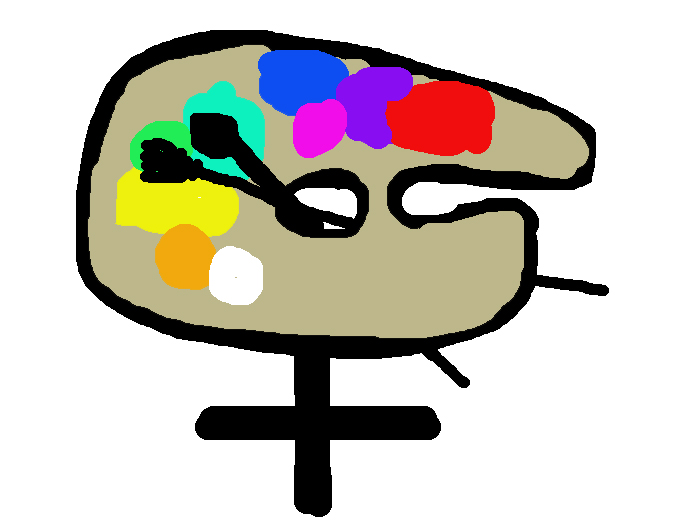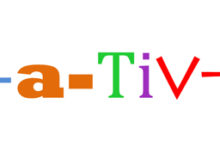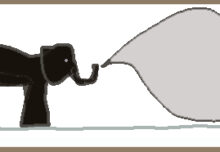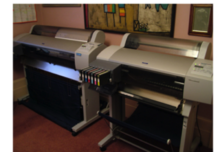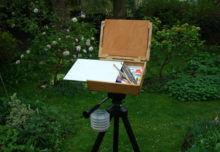Women artists. Are they taking over at last?
In my own personal experience, as a full-time male professional artist, I have become increasingly aware that women artists often outnumber men artists in exhibitions etc. That is fine by me. I really don’t mind whether my fellow artist is male or female.
However I will admit that I am slightly surprised because my lifelong exposure to art history seemed to suggest that most artists in the past were male.
A couple of explanations look possible.
- Women have always been just as artistic as men. Society didn’t want male female equality so women’s artistic prowess was long unrecognized and under reported. Art history has been written by male writers who were blind to the facts.
- The more recent changes in society where male/female equality is acknowledged and valued have enabled more women to become established artists than ever before.
So is it one or two, or neither, or both?
Lets have a look.
1…women’s artistic prowess was long unrecognized and under reported.
2…recent changes … have enabled more women to become artists
Evidence.
Quotes from Wikipedia which has a 6000 word article and list of women artists.
Prehistoric era
There are no records of who the artists of the prehistoric eras were, but studies of many early ethnographers and cultural anthropologists indicate that women often were the principal artisans in Neolithic cultures, … Cave paintings of this era often have human hand prints, 75% of which are identifiable as women’s.
For about three thousand years, the women – and only the women – of Mithila have been making devotional paintings of the gods and goddesses of the Hindu pantheon…
Medieval period
In the early Medieval period, women often worked alongside men. Manuscript illuminations, embroideries, and carved capitals from the period clearly demonstrate examples of women at work in these arts.
Renaissance
Although many aristocratic women had access to some training in art, though without the benefit of figure drawing from nude male models, most of those women chose marriage over a career in art.
Baroque era
Women artists in this period began to change the way women were depicted in art. Many of the women working as artists in the Baroque era were not able to train from nude models, who were always male, but they were very familiar with the female body.
In many countries of Europe, the Academies were the arbiters of style. The Academies also were responsible for training artists, exhibiting artwork, and, inadvertently or not, promoting the sale of art. Most Academies were not open to women. In France, for example, the powerful Academy in Paris had 450 members between the 17th century and the French Revolution, and only fifteen were women. Of those, most were daughters or wives of members. In the late 18th century, the French Academy resolved not to admit any women at all.
19th century
During the century, access to academies and formal art training expanded more for women in Europe and North America. The Royal College of Art, admitted women from its founding in 1837, but only into a “Female School” which was treated somewhat differently, with “life”- classes consisting for several years of drawing a man wearing a suit of armour. The Royal Academy Schools finally admitted women beginning in 1861, but students drew initially only draped models. However, other schools in London, including the Slade School of Art from the 1870s, were more liberal. By the end of the century women were able to study the naked, or very nearly naked, figure in many Western European and North American cities. The Society of Female Artists (now called The Society of Women Artists) was established in 1855 in London and has staged annual exhibitions since 1857, when 358 works were shown by 149 women, some using a pseudonym.
20th century
In 1993, Rachel Whiteread was the first woman to win the Tate Gallery’s Turner Prize. Gillian Wearing won the prize in 1997, when there was an all-woman shortlist…
So is it one or two, or neither, or both?
1…women’s artistic prowess was unrecognized and under reported.
For me that is proven by the Wikipedia article.
2…recent changes … have enabled more women to become artists
The restrictions mentioned in the article are very revealing. ‘Most Academies were not open to women in the Baroque era….. In the late 18th century, the French Academy resolved not to admit any women at all.’
But surely we are now experiencing monumental societal changes here in the West. Women vote, work, drive cars, earn good money, have equal rights. Sure some things still need changing. Perhaps lots of things still need changing. But enough has changed already so that we all can see that there are lots of good female artists. Hooray!
The gender gap in art is a whole new subject that I haven’t tried to write about here today.
But I promise that I will write about it soon.
Personal experience.
More women artists in Skylark Galleries. SK1 12 women, 2 men.
More women artists at home. Wife and daughter, and just me. I am outnumbered two to one.
Conclusion.
I reckon that both explanations hold water.
- I’ve been told that I should read Germaine Greer’s book ‘The Obstacle Race’. So I will. I have already started.
********************************************************

